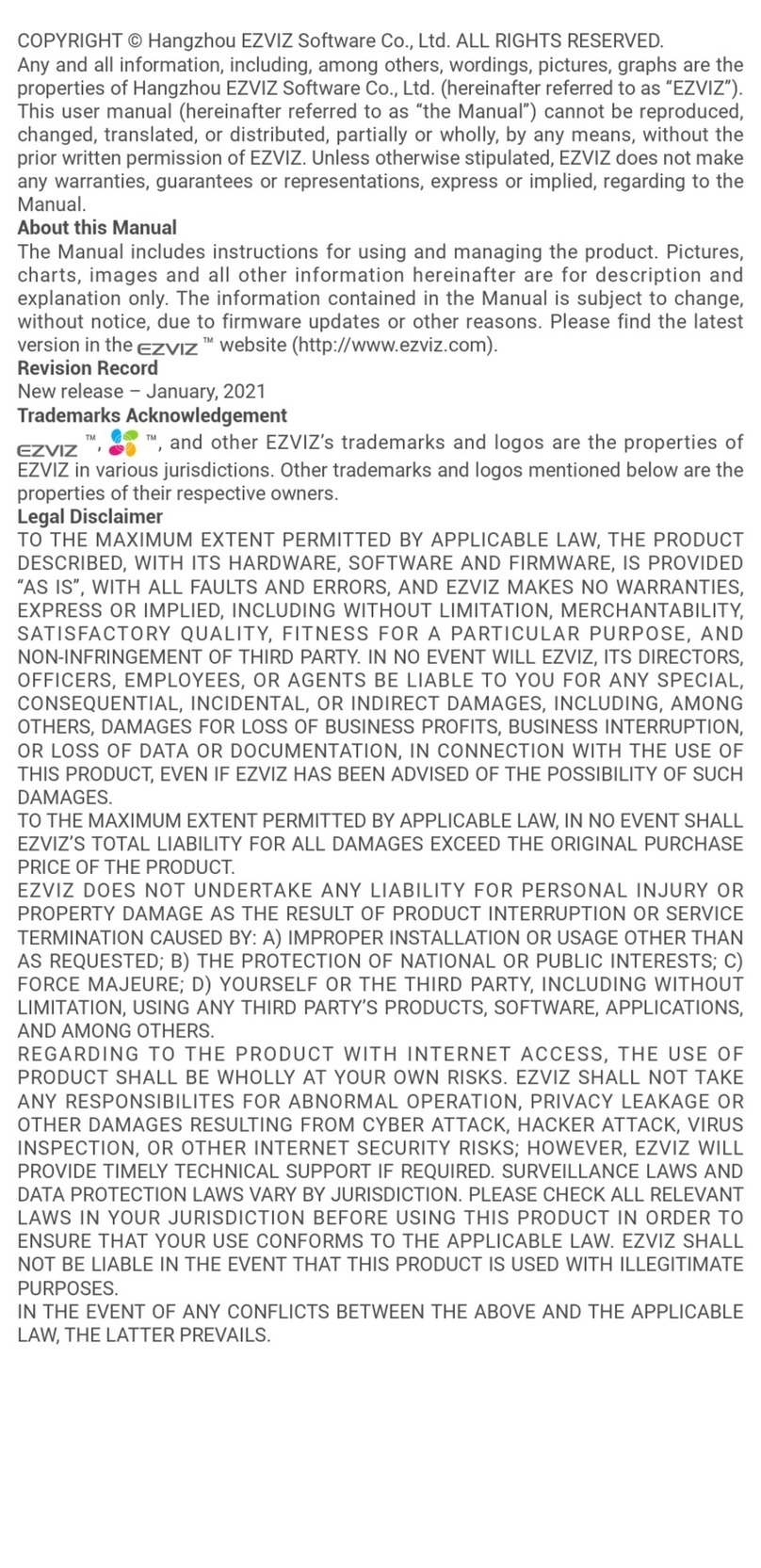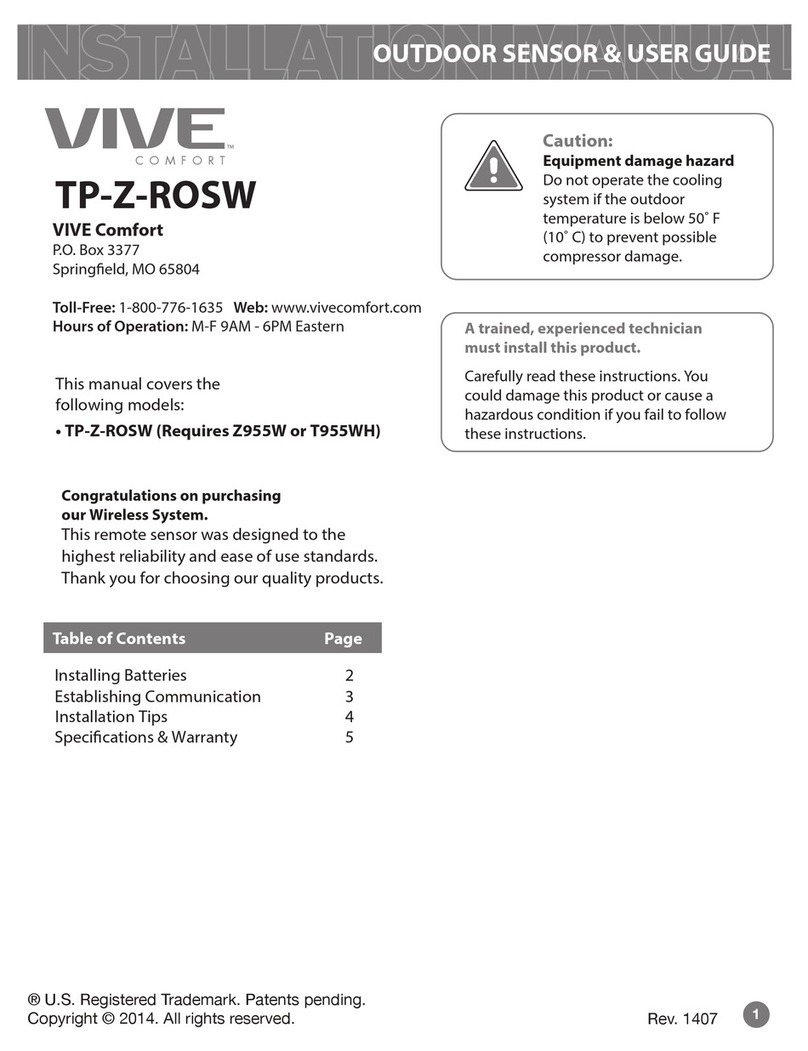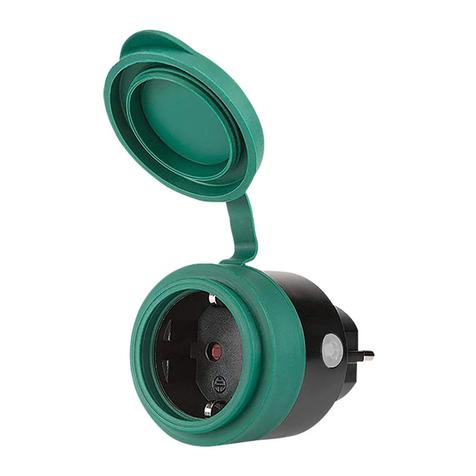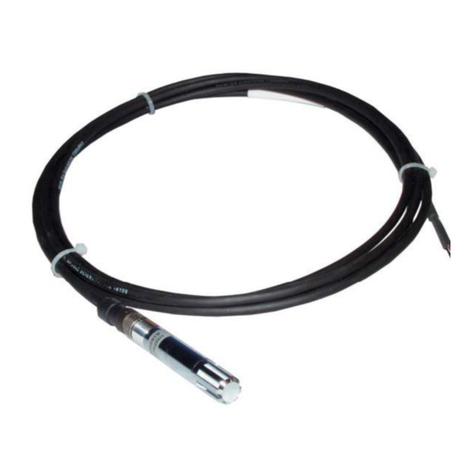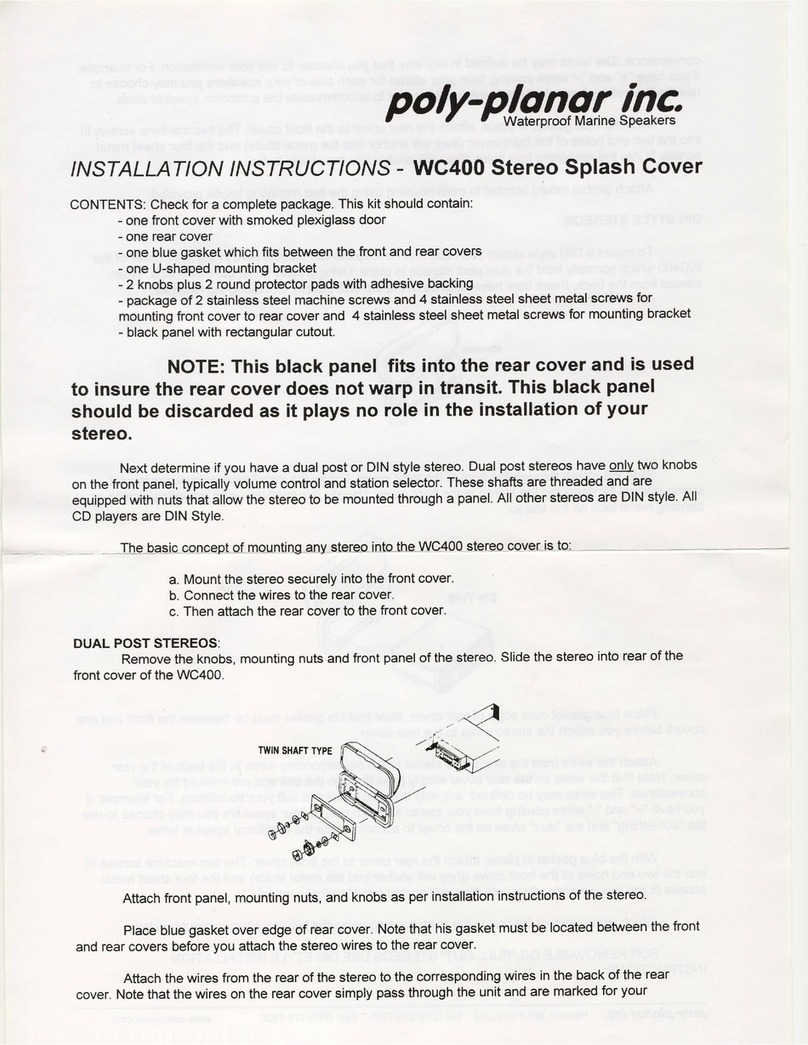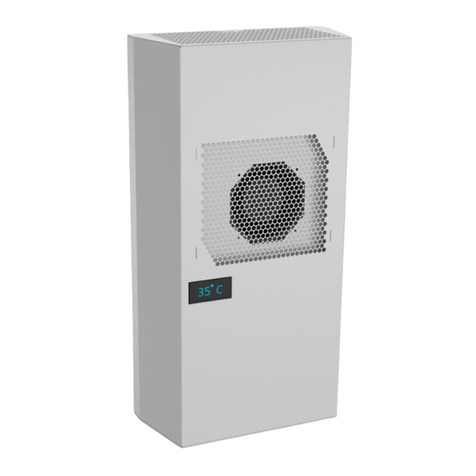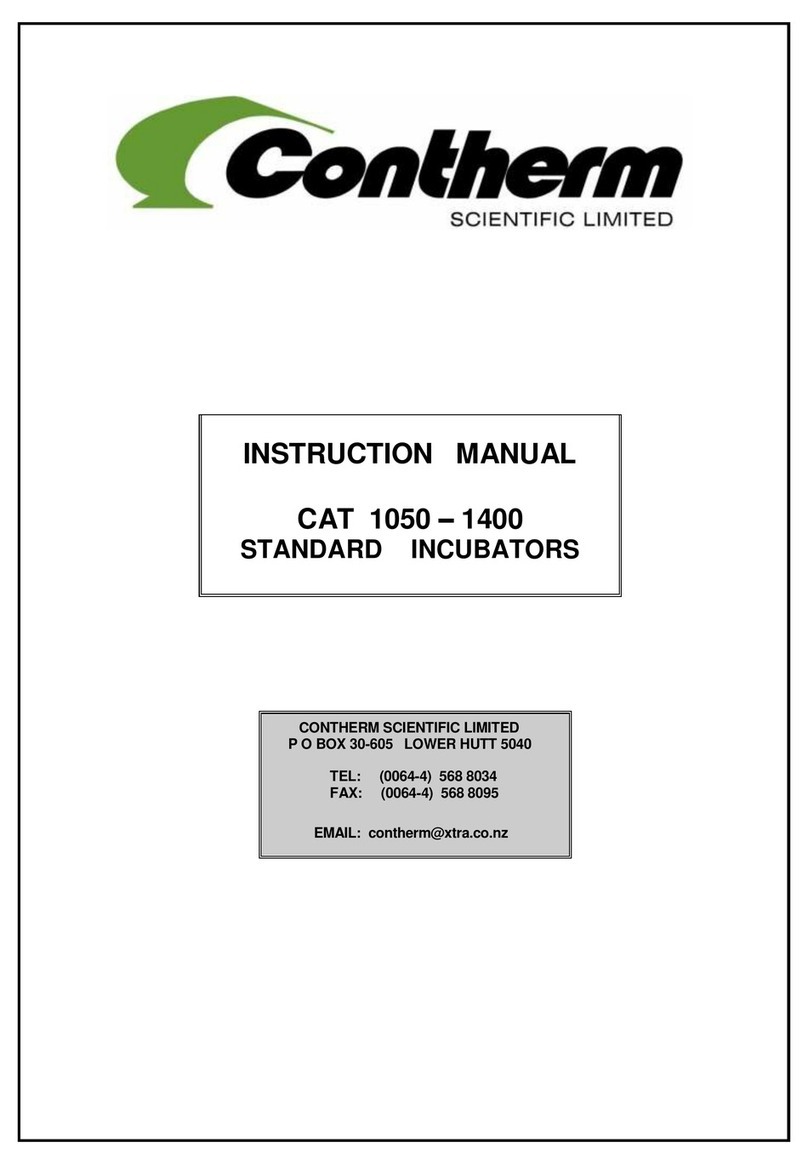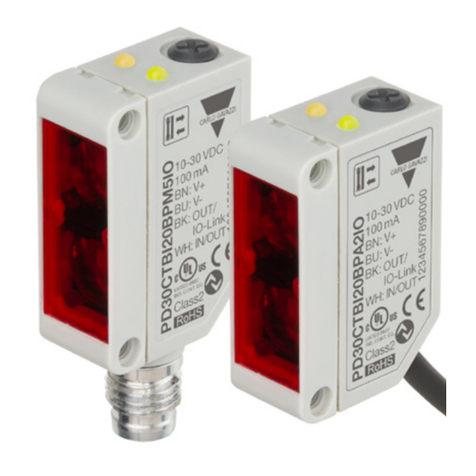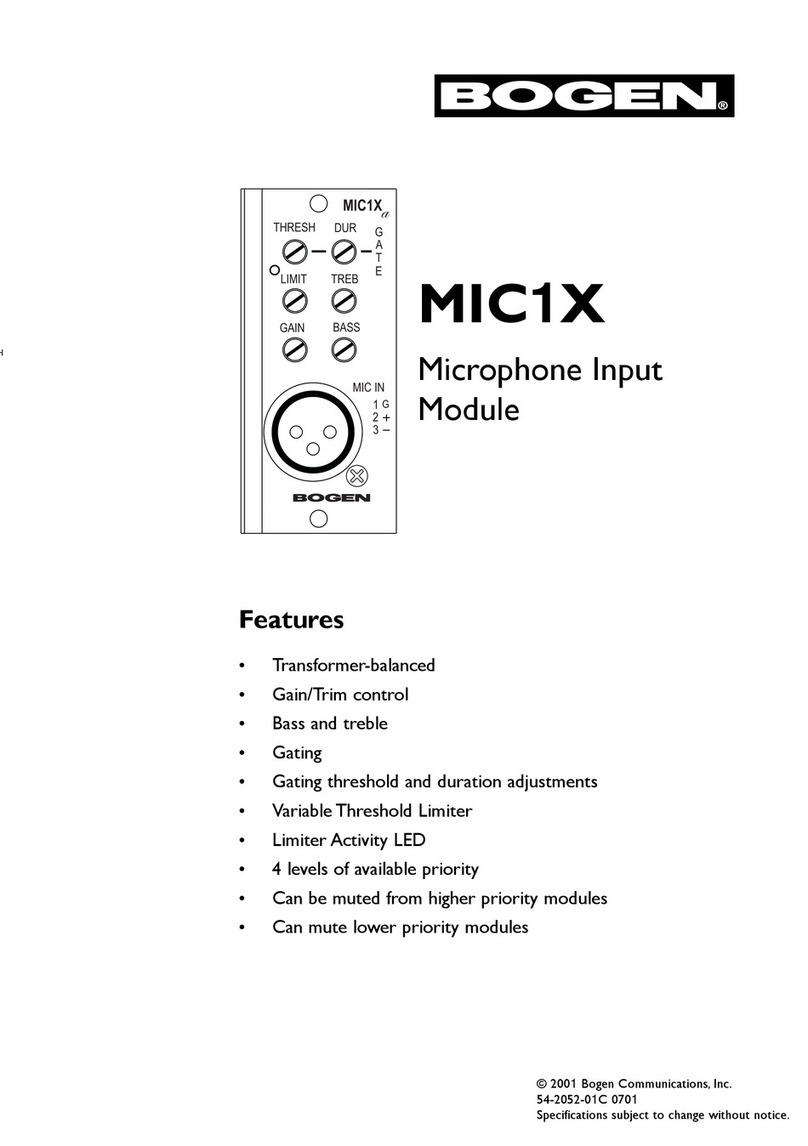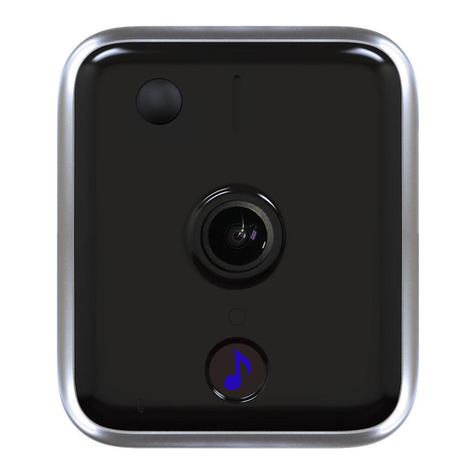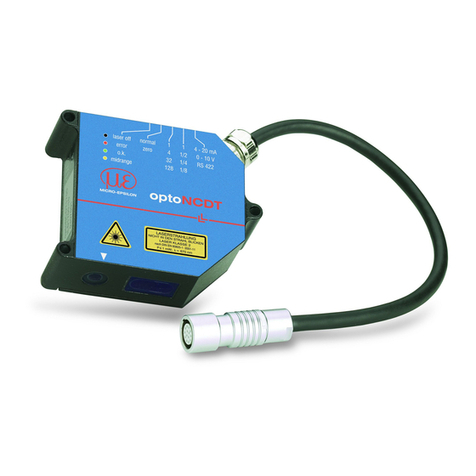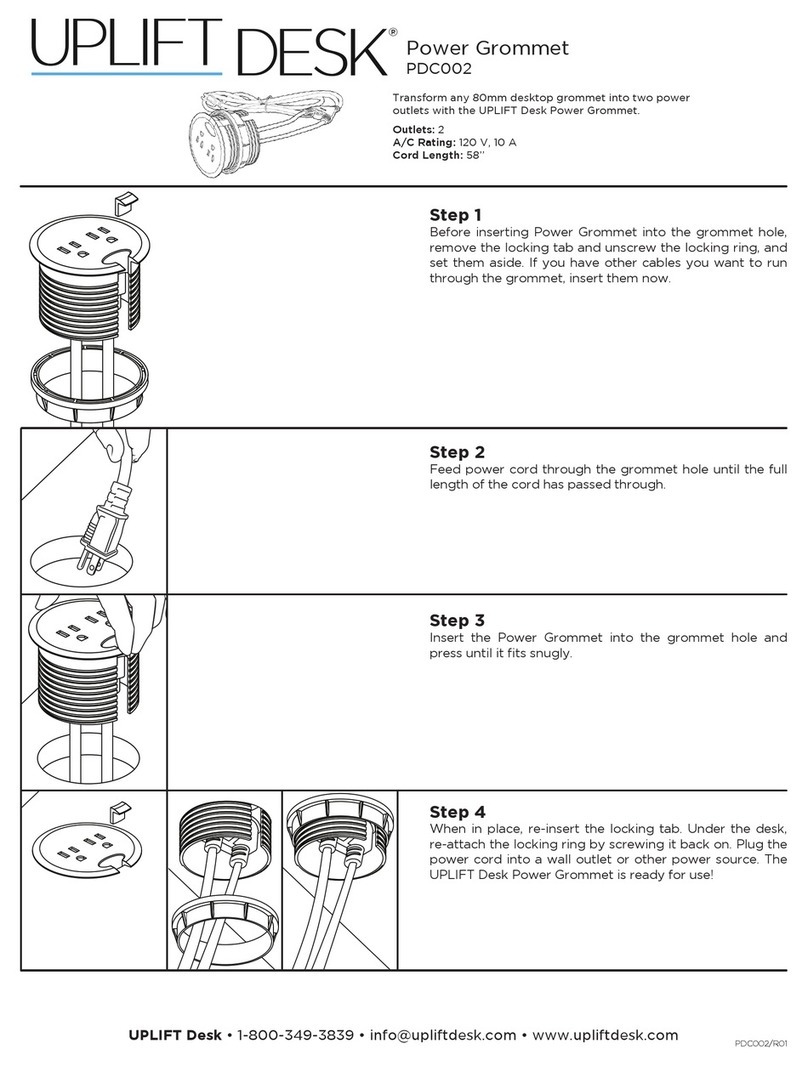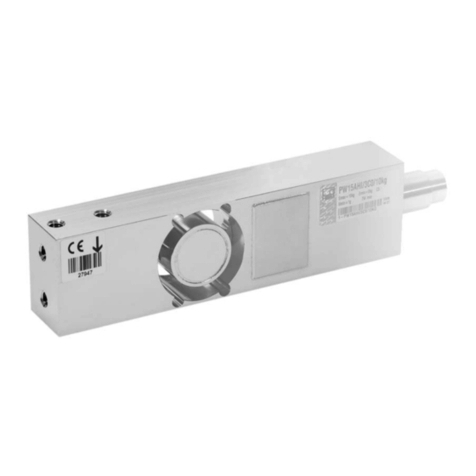Wild Country REVO Operating instructions



c. Lever
a. Tuber
b. Wheel d. Sideplate
I. How to Use This Product
Home
Position
2.1
1
2.2
Open
<4m/s
<4m/s
<4m/s
<4m/s
<4m/s
a.
b.
Max 1.5m
0
4.0 m/s
1
22
Components
See section III for supporting text.

>1.0m
!
>1.0m
!
2.3 2.4
Loading the rope Close
<4m/s
<4m/s
<4m/s
<4m/s
<4m/s
a.
b.
Max 1.5m
0
4.0 m/s
3
Correct
setup
<4m/s
<4m/s
<4m/s
<4m/s
<4m/s
a.
b.
Max 1.5m
0
4.0 m/s

STOP!
STOP!
PULL!
+20kg
STOP!
PULL!
STOP!
>4m/s
!
STOP!
STOP!
STOP!
STOP!
>4m/s
<4m/s
PULL!
STOP!
STOP!
!
!
5.1
5.4
Ø 8.5-11mm
!
!
5.4
5.15.2
5.55.6
5.3
5.1
5.4
STOP!
STOP!
PULL!
+20kg
STOP!
PULL!
STOP!
>4m/s
!
STOP!
STOP!
Contact Wild Country
STOP!
STOP!
>4m/s
<4m/s
PULL!
STOP!
STOP!
!
!
!
12.1 12.4
Ø 8.5-11mm
Ø8.5-11mm
!
!
12.4
12.1
12.2 12.5
12.6
12.3
12.1
12.4
Pre-climb
test
4
Releasing
a locked
REVO
5
STOP!
STOP!
PULL!
+20kg
STOP!
PULL!
STOP!
>4m/s
!
STOP!
STOP!
STOP!
STOP!
>4m/s
<4m/s
PULL!
STOP!
STOP!
!
!
5.1
5.4
Ø 8.5-11mm
!
!
5.4
5.15.2
5.55.6
5.3
5.1
5.4

6
>1.0m
!
STOP!
STOP!
PULL!
+20kg
STOP!
PULL!
STOP!
>4m/s
!
STOP!
STOP!
STOP!
STOP!
>4m/s
<4m/s
STOP!
STOP!
5.1
5.4
Ø 8.5-11mm
!
!
5.4
5.15.2
5.55.6
5.3
5.1
5.4
!
! !
Default
belaying
position
>1.0m
!
STOP!
STOP!
PULL!
+20kg
STOP!
PULL!
STOP!
>4m/s
!
STOP!
STOP!
STOP!
STOP!
>4m/s
<4m/s
PULL!
STOP!
STOP!
!
!
5.1
5.4
Ø 8.5-11mm
!
!
5.4
5.15.2
5.55.6
5.3
5.1
5.4
7
STOP!
STOP!
PULL!
+20kg
STOP!
PULL!
STOP!
>4m/s
!
STOP!
STOP!
STOP!
STOP!
>4m/s
<4m/s
PULL!
STOP!
STOP!
!
!
5.1
5.4
Ø 8.5-11mm
!
!
5.4
5.15.2
5.55.6
5.3
5.1
5.4
Partner
Check

<4m/s
<4m/s
<4m/s
<4m/s
<4m/s
a.
b.
Max 1.5m
0
4.0 m/s
<4m/s
<4m/s
<4m/s
<4m/s
<4m/s
a.
b.
Max 1.5m
0
4.0 m/s
Paying out
9
Good
Belaying
Practice
8
STOP!
STOP!
PULL!
+20kg
STOP!
PULL!
STOP!
>4m/s
!
STOP!
STOP!
STOP!
STOP!
>4m/s
<4m/s
PULL!
STOP!
STOP!
!
!
5.1
5.4
Ø 8.5-11mm
!
!
5.4
5.15.2
5.55.6
5.3
5.1
5.4
Catching a fall
11
STOP!
STOP!
PULL!
+20kg
STOP!
PULL!
STOP!
>4m/s
!
STOP!
STOP!
STOP!
STOP!
>4m/s
<4m/s
PULL!
STOP!
STOP!
!
!
5.1
5.4
Ø 8.5-11mm
!
!
5.4
5.15.2
5.55.6
5.3
5.1
5.4
Taking in
<4m/s
<4m/s
<4m/s
<4m/s
<4m/s
a.
b.
Max 1.5m
0
4.0 m/s
10

Lowering
12.1
<4m/s
<4m/s
<4m/s
<4m/s
<4m/s
a.
b.
Max 1.5m
0
4.0 m/s
12.2 12.3
Lowering
Speed
Lowering
Technique
<4m/s
<4m/s
<4m/s
<4m/s
<4m/s
a.
b.
Max 1.5m
0
4.0 m/s
STOP!
STOP!
PULL!
+20kg
STOP!
PULL!
STOP!
>4m/s
!
STOP!
STOP!
STOP!
STOP!
>4m/s
<4m/s
PULL!
STOP!
STOP!
!
!
5.1
5.4
Ø 8.5-11mm
!
!
5.4
5.15.2
5.55.6
5.3
5.1
5.4
!
<4m/s
<4m/s
<4m/s
<4m/s
<4m/s
a.
b.
Max 1.5m
0
4.0 m/s
a.
b.
STOP!
STOP!
PULL!
+20kg
STOP!
PULL!
STOP!
>4m/s
!
STOP!
STOP!
STOP!
STOP!
>4m/s
<4m/s
PULL!
STOP!
STOP!
!
!
5.1
5.4
Ø 8.5-11mm
!
!
5.4
5.15.2
5.55.6
5.3
5.1
5.4

STOP!
STOP!
PULL!
+20kg
STOP!
PULL!
STOP!
>4m/s
!
STOP!
STOP!
STOP!
STOP!
>4m/s
<4m/s
PULL!
STOP!
STOP!
!
!
5.1
5.4
Ø 8.5-11mm
!
!
5.4
5.15.2
5.55.6
5.3
5.1
5.4
<4m/s
<4m/s
<4m/s
<4m/s
<4m/s
a.
b.
Max 1.5m
0
4.0 m/s
Resting
Pictograms
13
15
Warnings
14
n. Belay handm. Resting
a. Read the
instructions
k. Climber
b. Correct use c. Incorrect use d. Risk of injury or death
with incorrect use
f. Load
h. Locked j. Anchor point
p. Lubrication point q. Inspection point
e. Caution
l. Fall
g. Direction of load
o. Rope diameter
!
i. Unlocked
STOP!
STOP!
PULL!
+20kg
STOP!
PULL!
STOP!
>4m/s
!
STOP!
STOP!
STOP!
STOP!
>4m/s
<4m/s
PULL!
STOP!
STOP!
!
!
5.1
5.4
Ø 8.5-11mm
!
!
5.4
5.15.2
5.55.6
5.3
5.1
5.4

(GB)
II. Product Overview
INTRODUCTION
The REVO is the first BI-DIRECTIONAL assisted locking belay device:
its function is independent from the loading orientation of the
rope, thus eliminating one of the most common causes of belay
related accidents. Irrespective of the situation, an uncontrolled
descent will cause the INERTIA REEL to activate, grip the rope and
arrest the fall. The innovative PANIC-PROOF RELEASE MECHANISM
(pat. pending) removes the necessity for a handle to unlock the
system when lowering the climber. The device is INTUITIVE to use
like a traditional belay plate and is thus suited for both the novice
and expert alike. The clever combination of these features makes
the REVO the SAFEST BELAY DEVICE on the market.
TECHNICAL EXPLANATION
The REVO wheel locks at around 4m/s which enables slack to be
given and climbers lowered at a normal speed. Providing you
have an attentive belayer (minimal slack in the system) the REVO
wheel will lock within one REVOlution (less than 10cm) meaning
a maximum fall of 1.1m (not including rope stretch). When the
wheel reaches a high enough speed, 4m/s, the sprung loaded shoe
engages with the tuber‘jaw’, which rotates and locks into the wheel.
The wheel is prevented from rotating, and the friction of the ribs
on the wheel holds the rope in place. Pulling the rope back onto
the tuber‘jaw’ will release the wheel whilst retaining control with
the belay hand.
Be aware that if the REVO does not lock it is because you are
doing your job as a belayer and controlling the rope correctly.
FUNCTIONALITY
REVO complies to the European Norm EN 15151-1and has been
developed for mountaineering and climbing. It is suitable for all
levels of belaying; for beginners it teaches the best belay technique
(always keeping a hand on the brake end of the rope) which can
be applied to a traditional belay plate at a later date, with the
added security of the locking function. The REVO makes it very
simple to give & take in slack and for experts offers an additional
level of safety without affecting their usual belay method.
TOP ROPE CLIMBING
The REVO is suitable for top roping both indoors and outdoors,
pay attention for the entire climb (especially during the first
few metres above the ground) ensuring the rope is taught to
negate the effects of rope stretch and to ensure the REVO locks
immediately if control is lost.
LEAD CLIMBING
The REVO is suitable for lead climbing using leader placed
protection or in situ gear/ bolts as it functions like a normal belay
plate allowing for a‘dynamic’belay technique. However if the
speed of the rope exceeds 4m/s or control is lost the REVO will lock
automatically.
MULTI-PITCH CLIMBING
The REVO can be used for multi pitch climbing by experts but it is
not its primary function.
When bringing up the second from above you must control the
rope at all times with the belay hand, ensuring the weight of the
rope does not cause slack to be given by accident.
ABSEILING
The REVO can be used for abseiling on a single rope, be aware
that should the mechanism lock during the abseil descent
(because the descent speed exceeds 4m/s) the weight of a
hanging rope can cause the REVO to unlock. You should maintain
control of the descent with the belay hand at all times.
III. How to use this product
For guidance on how to use this product refer to the diagrams in
section I and the following text. Neither should be interpreted in
isolation; furthermore these instructions cannot be substituted for
comprehensive instruction by trained and competent persons.
1. COMPONENTS
a. Tuber, b. Wheel, c. Lever, d. Sideplate
2.1. HOME POSITION
Ensure both tubers are in the unlocked (down) position
2.2. OPEN
Twist the lever upwards and open the REVO
2.3. LOADING THE ROPE
Insert rope into REVO
2.4. CLOSE
Close the device ensuring both rope ends are protruding from
the top
3. CORRECT SETUP
•Knot in end of rope
•Karabiner (EN12275 Type H - LOCKING or Type B - LOCKING)
is through belay loop and locked
•Karabiner inserted through REVO in correct orientation
•Karabiner is not cross-loaded
4. PRE-CLIMB TEST
•Pull aggressively upwards on the live rope, do not grip the
brake end of the rope
•The REVO should lock and block the rope

5. RELEASING A LOCKED REVO
There are two“locked”scenarios; 5.1 & 5.4. If locked in scenario 5.1
perform steps 5.2 & 5.3 to reach 5.4 before continuing.
5.1 – REVO locked, tuber not activated, rope blocked
5.2 – Push tuber up with thumb while keeping a hand on
the brake end of the rope
5.3 – Tuber activated
5.4 – REVO locked, tuber activated, rope blocked
5.5 – Pull on brake end of the rope to lower the tuber and
unlock REVO
5.6 – REVO unlocked, resume active use
6. DEFAULT BELAYING POSITION
•Always keep a hand on dead rope
•Greater than 1m of dead rope
•Knot at end of rope
7. PARTNER CHECK
•Rope inserted into REVO correctly
•Knot in end of dead rope
•Climber tied in with suitable knot through harness tie in points
•Harness sits correctly and is closed
•Rope diameter between 8.5-11mm
•Connecting karabiner is locked
8. GOOD BELAYING PRACTICE
•Always looking up at climber
•Stand close to the wall
•Minimal slack in the system
9. PAYING OUT
Pull upwards on live rope, keep hand on dead rope --> Bring
rope in your break hand towards the device and pull upwards
accordingly to pay out
10. TAKING IN
Pull down on live rope and horizontally on dead rope
11. CATCHING A FALL
•Grip brake end of the rope bringing hand(s) down and towards
your body, the REVO will not lock if you belay correctly
•If you fail your job as a belayer i.e. there is too much slack on
the brake end of the rope then the REVO contains a backup
mechanism and will lock at 4m/s.
12.1. LOWERING
•Grip dead rope with both hands
•Lower climber, keep speed less than 4m/s
•If over 4m/s the REVO will lock
•keep dead rope close to your body in order
to maximise the tuber's friction
12.2. LOWERING TECHNIQUE
Use either:
12.2-a – Allow rope to slide through top hand while gripping with
bottom hand
12.2-b – Hand over hand technique to lower climber
12.3. LOWERING SPEED
•Lower climber smoothly with a constant speed
•Avoid sudden actions while lowering as the elasticity of the
rope will amplify this effect and cause the REVO to lock.
13. RESTING
•Keep one hand on brake end of the rope
•Bring other hand to grip the REVO and rope
14. WARNINGS
•Keep REVO away from dirt
•Do not drop REVO
•Keep loose clothing away from REVO
•Keep hair tied back away from REVO
15. PICTOGRAMS
a. Read the instructions, b. Correct use, c. Incorrect use,
d. Risk of injury or death with incorrect use, e. Caution, f. Load,
g. Direction of load, h. Locked, i. Unlocked, j. Anchor Point,
k. Climber, l. Fall, m. Resting, n. Belay hand, o. Rope diameter,
p. Lubrication point, q. Inspection point.
IV. Product Instructions
GENERAL INSTRUCTIONS
This notice contains general product information only, for
complete product information, see also the attached notice of
information specific to this product.
Adhere strictly to the following advice and recommendations;
if in doubt please contact Wild Country Ltd. The information in
these instructions is not exhaustive and cannot be substituted for
comprehensive instruction by trained and competent persons.
This product should only be used by trained and competent
persons or the user should be under the supervision of a trained
and competent person.
Climbing and mountaineering are hazardous; even correct
selection, maintenance and use of the correct equipment cannot
eliminate the potential for danger, serious injury or death. It
is the users responsibility at all times to ensure that he or she
understands the correct and safe use of any product supplied
by Wild Country Ltd; uses it only for the purposes for which
it is designed and practices all proper safety procedures. The
manufacturer or supplier will not accept any responsibility for
damage, injury or death resulting from misuse.
This product is made in conformity with PPE regulation 2016/425.
GENERAL USE
This product should be used as instructed. It may be used in
conjunction with any appropriate item of PPE covered by the
aforementioned directive of suitable specification with due
consideration to the limitations of each individual piece of

equipment and of the belay system as a whole. No alterations or
markings should be made to it.
The safety that this product provides depends upon its strength,
the quality of the rock anchorage used and the integrity of the
belay point. The strength will be reduced through age and
general wear and tear dependant upon the amount of use, see
obsolescence for more details.
Be aware that this product can be damaged in a fall and
consequently should always be examined for defects before reuse.
If this product exhibits signs of wear or defects or if there is any
doubt about its serviceability, replace it. It is recommended that
any equipment involved in a serious fall should be replaced; lives
may depend upon your equipment.
The user should be fully aware of the history of this product (use,
storage, inspection, etc.). If this product is not for personal use (eg.
used in mountaineering and rock climbing centers) we strongly
recommend a systematic approach to record keeping. This should
always be carried out by a competent person. In addition to
the normal inspection required before use this product should
be thoroughly examined at least once every three months by
a competent person. If any defects are found as detailed in
obsolescence or are suspected this product should be withdrawn
from use immediately.
GENERAL SAFETY ADVICE
Wearing a climbing helmet will help protect your head from injury
if you fall. When using belay techniques we recommend the use
of appropriate gloves. Foresee and take appropriate action in
situations where rescue may be required.
WARNINGS
•The braking effect of this device will vary dependent on the
following factors, it is the users responsibility to assess these
factors in a safe situation before use:- Rope diameter, rope
slipperiness, wet rope, icy rope and other factors.
•It is the responsibility of the user to familiarise themself with the
braking effect available before each use.
•The user should carry out a pull test on the active rope before
each use to verify the device is functioning correctly.
•The free end of the rope shall be controlled by hand at all times.
•It is important to check the braking device regularly for any
damage during use and to withdraw it from use if any damage
or defect is found.
•Be aware that humidity, wet and icy conditions will potentially
cause this device to malfunction or fail.
•The safe working life of this product may be as little as one use
in extreme circumstances.
TEMPERATURE
Always keep products made wholly or partially from textile
elements below 50°C as the performance of the nylon/ Dyneema
from which they are made may be affected at temperatures above
this. Tests down to -40°C show no permanent change in the
performance of this material although nylon/Dyneema may stiffen
while at temperatures below 0°C.
CHEMICALS AND CORROSIVE AGENTS
Avoid all contact with chemical reagents as they will affect the
performance of this product (eg. vehicle battery acid, bleach, etc.).
Discard this product immediately if contact has or is suspected
to have occurred (the product may be permanently weakened
without showing any signs). It is essential that this product is
cleaned as soon as is practical after exposure to sea water or any
saline environment (eg. when used on sea cliffs).
CLEANING AND DISINFECTION
First rinse the product in clean cold water of domestic supply
quality. If still soiled rinse in warm water (maximum temperature
40°C) with pure soap. Thoroughly rinse and dry naturally in a
warm ventilated room away from direct heat.
MAINTENANCE
This product is not user maintainable with the exception of
cleaning and lubrication where relevant. Before lubrication refer
to the section“cleaning and disinfection”. We recommend the use
of WD40 as a lubricant only. Avoid applying to surfaces which
come into contact with the rope (Wheel and Tuber). Clean excess
lubricant off all surfaces after application; contact Wild Country for
further advice if in doubt.
STORAGE AND TRANSPORTATION
After any necessary cleaning and lubrication store the product
unpacked in a cool, dark, dry, ventilated place away from sharp
edges, pressure, corrosives or any possible causes of damage.
Wet equipment should first be allowed to dry before storage
or transportation. Care should be taken to protect this product
against such risks as those detailed in obsolescence. It is
recommended that a rucksack or other suitable bag or container
is used during transport.
OBSOLESCENCE
This product will deteriorate over time in the course of normal use
(or whilst in storage) and because of this we are required by directive
89/686/ EEC to give an obsolescence date. It is difficult to be precise
but a conservative estimate for this product is that it has a life span
of 10 years from date of first use for metal components and 5 years
from date of first use or 10 years from date of first storage for textile
components. However, please note that the following factors will
further reduce the safe workinglife of the product:-
Metal Components; normal use, exposure to chemical reagents,
corrosion, heat contamination, high impact load during fall arrest,

loading over sharp edges of rock or equipment or failure to
maintain (clean and lubricate) as recommended.
Textile Components; most textile components used in safety
equipment are known to degrade gradually with time even when
stored in ideal conditions. Additionally normal use, rope burn,
exposure to elevated temperatures, high impact load during
fall arrest, prolonged exposure to UV light including sunlight,
abrasion, cuts, loading over sharp edges of rock or equipment
or failure to maintain (clean) as recommended will cause further
reduction in strength.
PRODUCT MARKING
In addition to the instruction leaflet accompanying this product
the following information is marked on the device:
a. Product Name: REVO
b. Manufacturer: Wild Country - OBERALP S.p.A.
Via Waltraud Gebert Deeg 4 I-39100 Bozen, Italy
www.wildcountry.com.
c. Rope compatabilty:
Compatible with single dynamic ropes (EN 892). Commercially
stated rope diameters have a tolerance up to ± 0,2 mm. Rope
diameters and other characteristics may vary with use.
d. Rope Orientation: Visual indication of correct placement of
the rope.
e. Information Pictogram: Read the instructions supplied by
the manufacturer.
f. Patent Pending
g. Batch code
1. Internal reference
2. Year of manufacture (17 = 2017)
3. Month of manufacture (01 = Jan)
4. Individual serial number
h. Product Compliance: EN 15151-1
Type 8: Devices for belaying and abseiling with a panic locking element.
i. Product Compliance: UIAA 129
This confirms that the product has been manufactured in
accordance with the UIAA norm.
j. Country of Manufacture: ITALY
k. Notified Body: Dolomiticert (CE 2008)
The accredited notified body (CE 2008) was consulted during the
design stage of this Wild Country product; Dolomiticert S.c.a.r.l.
Notified Body no. 2008 Z.I. Villanova, 1 32013 Longarone Italy
WEIGHT
B 50 1706 00001
MADE IN ITALY
B
50
17
06 00001
PAT. PEND.
REVO PRODUCTION BATCH CODE:
Individual Serial Number
Month
Year
Dwg Index No.
Manufacturer
A - FUKO
B - Temponi
Ø8.5-11.0mm
UIAA 129 EN15151-1
a
c
d
b
B 50 1706 00001
MADE IN ITALY
B
50
17
06 00001
PAT. PEND.
REVO PRODUCTION BATCH CODE:
Individual Serial Number
Month
Year
Dwg Index No.
Manufacturer
A - FUKO
B - Temponi
Ø8.5-11.0mm
UIAA 129 EN15151-1
a
c
d
b
Ø 8.5-11.0mm
A 01 1701 00001
B 50 1706 00001
MADE IN ITALY
PAT. PEND.
UIAA 129 EN15151-1
g
j
e
h
i
k
f
275g

(FR)
II.
Product Overview
INTRODUCTION
Le REVO est le premier dispositif d’assurage auto-bloquant
BI-DIRECTIONNEL. Il fonctionne indépendamment du sens dans
lequel la corde est installée, ce qui élimine une des causes les plus
fréquentes d’accidents liés à l’assurage. Quelle que soit la situation,
une descente incontrôlée activera le dispositif INERTIA REEL
qui bloquera la corde et retiendra la chute. Le mécanisme anti-
panique innovant PANIC-PROOF RELEASE (en instance de brevet)
évite la mise en œuvre d’une poignée pour débloquer le système
au moment de redescendre le grimpeur. L’appareil se manipule
de façon INTUITIVE, à l’image d’un dispositif d’assurage classique,
et est adapté aussi bien aux grimpeurs novices qu’aux experts.
La combinaison intelligente de toutes ces caractéristiques fait du
REVO le DISPOSITIF D’ASSURAGE LE PLUS SÛR du marché.
DESCRIPTION TECHNIQUE
La roue du REVO se bloque à une vitesse d’environ 4m/s, ce qui
permet de donner du mou ou de redescendre un grimpeur à
vitesse normale. En considérant que l’assureur est attentif (pas
trop de mou dans le système), la roue du REVO se bloquera après
un tour complet (moins de 10cm), ce qui constitue une chute de
1,1m au maximum (élasticité de la corde non incluse). Si la roue
atteint suffisamment de vitesse (4m/s), le sabot à ressort soulève
la mâchoire qui va alors pivoter pour s’encastrer dans la roue. La
roue se bloque et les nervures présentes sur celles-ci retiennent la
corde. En tirant la corde vers l’arrière sur la mâchoire, on débloque
la roue tout en maintenant le contrôle de la corde avec la main
d’assurage. Notez que si le REVO ne se bloque pas, cela signifie
que vous faites correctement votre travail en tant qu’assureur et
que vous contrôlez la corde de façon adéquate.
FONCTIONNALITÉ
REVO répond à la norme européenne EN 15151-1 et est conçu
pour l’escalade et l'alpinisme.
El es apto para todos los niveles de aseguramiento: a los
principiantes les enseña cuál es la mejor técnica de aseguramiento
(manteniendo siempre una mano en la cuerda muerta), lo que
puede aplicarse a posteriori a una placa de aseguramiento
tradicional, con la seguridad añadida de la función de bloqueo.
El REVO hace muy sencillo dar y recoger cuerda y, para expertos,
ofrece un nivel adicional de seguridad sin afectar al método de
aseguramiento habitual utilizado.
ESCALADE EN MOULINETTE
Le REVO est adapté à l’escalade en moulinette, aussi bien en salle
qu’en falaise. L’assureur doit rester vigilant durant toute l’escalade
(et en particulier lors des premiers mètres au-dessus du sol), et
doit s’assurer que la corde est suffisamment tendue pour prévenir
les effets de l’élasticité de la corde et garantir le blocage immédiat
du REVO en cas de perte de contrôle.
ESCALADE EN TÊTE
Le REVO est adapté à l’escalade en tête, avec des points de
protection déjà en place (pitons, spits, etc.) ou mis en place durant
la progression, car le dispositif fonctionne comme un système
d’assurage classique permettant un assurage dynamique. Mais
quand la vitesse de la corde dépasse 4m/s ou que l’assureur perd
le contrôle, le REVO bloque la corde automatiquement.
ESCALADE SUR PLUSIEURS LONGUEURS
Le REVO peut être utilisé par les experts pour l’escalade dans
des voies de plusieurs longueurs, mais ce n’est pas sa fonction
première.
Lors de l'assurage du deuxième de cordée depuis le haut, vous
devez contrôler la corde en permanence avec la main d’assurage,
en vous certifiant que le poids de la corde ne donne pas de mou
par erreur.
DESCENTE EN RAPPEL
Le REVO peut être utilisé pour la descente en rappel sur un seul
brin de corde. Il faut être attentif dans le cas où le mécanisme
se bloquerait durant la descente en rappel (en raison d’une
vitesse supérieure à 4m/s), car le poids de la corde suspendue est
susceptible de débloquer le REVO. Il faut garder le contrôle durant
toute la descente en tenant le brin libre en permanence avec la
main d’assurage.
III.
Comment utiliser ce produit
Pour une utilisation correcte et adéquate du produit, référez-
vous aux illustrations dans la section I, ainsi qu'au texte qui suit.
Ces différentes instructions ne doivent pas être interprétées de
façon isolée. De plus, celles-ci ne remplacent en aucun cas des
instructions fournies par une personne compétente et avisée.
1. COMPOSANTS
a. Mâchoire, b. Roue, c. Levier, d. Plaque latérale
2.1. POSITION DE BASE
Assurez-vous que les deux mâchoires sont en position
débloquées (vers le bas)
2.2. OUVRIR
Poussez le levier vers le haut et ouvrez le REVO
2.3. INSÉRER LA CORDE
Insérez la corde dans le REVO
2.4. FERMER
Fermez le dispositif en vous assurant que les deux brins de corde
sortent par le haut

3. MISE EN PLACE CORRECTE
•Nœud en bout de corde
•Le mousqueton passe dans la boucle d’assurage et est verrouillé
•Le mousqueton est inséré dans le REVO dans la bonne direction
•Le mousqueton n’est pas positionné en travers
4.TEST AVANT L’ESCALADE
•Tirez énergiquement sur le brin d’assurage de la corde,
sans tenir le brin libre
•Le REVO doit se bloquer et retenir la corde
5. DÉBLOQUER LE REVO
Il existe deux situations de blocage: 5.1 et 5.4. Si le blocage
correspond à la situation 5.1, effectuez les étapes 5.2 et 5.3 pour
arriver à la situation 5.4 avant de continuer.
5.1 - REVO bloqué, mâchoire non activée, corde entravée
5.2 - Poussez la mâchoire vers le haut avec le pouce,
tout en tenant le brin libre avec une main
5.3 - La mâchoire est activée
5.4 - REVO bloqué, mâchoire activée, corde entravée
5.5 - Tirez sur le brin libre pour faire redescendre la mâchoire
et débloquer le REVO
5.6 - REVO débloqué, prêt à poursuivre l’assurage
6. POSITION DE BASE POUR L’ASSURAGE
•Garder toujours une main sur le brin libre
•Brin libre de 1 mètre au minimum
•Nœud en bout de corde
7. CONTRÔLE DU PARTENAIRE
•Corde insérée correctement dans le REVO
•Nœud à l’extrémité du brin libre
•Grimpeur encordé de façon correcte et avec
le bon nœud sur le baudrier
•Le baudrier est porté correctement et fermé
•Diamètre de corde entre 8,5 et 11mm
•Le mousqueton de sécurité est verrouillé
8. BONNE ATTITUDE D’ASSURAGE
•Toujours regarder le grimpeur
•Se tenir près de la paroi
•Maintenir un minimum de mou dans le système
9. DONNER DU MOU
Tirez sur le brin d’assurage vers le haut, gardez une main sur
le brin libre
10. RAVALER DE LA CORDE
Tirez vers le bas sur le brin d’assurage et horizontalement sur le brin libre
11. RETENIR UNE CHUTE
•Tenez le brin libre en ramenant la(les) main(s) vers le bas et
vers le corps; le REVO ne se bloquera pas si vous effectuez les
manipulations correctement
•Si vous rencontrez des problèmes au moment de l’assurage, p.
ex. en laissant trop de mou sur le brin libre, le REVO est équipé
d’un mécanisme de sécurité qui bloquera la corde si sa vitesse
dépasse 4m/s
12.1. REDESCENDRE LE GRIMPEUR
•Tenez le brin libre avec les deux mains
•Redescendez le grimpeur à une vitesse inférieure à 4m/s
•Le REVO bloquera la corde si la vitesse dépasse 4m/s
•Tenez le brin libre proche de vous pour éviter les frictions
12.2.TECHNIQUE DE DESCENTE D’UN GRIMPEUR
Deux options:
12.2-a – La corde glisse à travers la main du haut, tandis que la
main du bas retient la corde
12.2-b – Les mains passent l’une par-dessus l’autre pour
redescendre le grimpeur
12.3.VITESSE DE DESCENTE
•Redescendez le grimpeur en douceur à une vitesse constante
•Évitez les mouvements brusques au moment de redescendre le
grimpeur; l’élasticité de la corde va amplifier leur effet et le REVO
risque de bloquer la corde
13. REPOS
•Garder une main sur le brin libre
•Tenez le REVO et la corde avec l’autre main
14. MISES EN GARDE
•Évitez de salir votre REVO
•Ne laissez pas tomber le REVO
•Maintenez les vêtements amples à l’écart du REVO
•Maintenez les cheveux attachés lors de l’utilisation du REVO
15. PICTOGRAMMES
a. Lire les instructions, b. Utilisation correcte, c. Mauvaise utilisation,
d. Risque de blessures ou de mort en cas de mauvaise utilisation,
e. Attention, f. Charge g. Direction de charge, h. Verrouillé,
i. Déverrouillé, j. Point d’amarrage, k. Grimpeur, I. Chute, m. Repos,
n. Main d’assurage, o. Diamètre de corde, p. Point de lubrification,
q. Point d’inspection.
I V.
Product Instructions
INFORMATIONS GÉNÉRALES
Cette notice contient des informations générales sur le produit.
Pour des informations complètes, consultez la notice annexée,
spécifique au produit.
Respectez rigoureusement les conseils et les recommandations
suivantes; en cas de doute, veuillez contacter Wild Country Ltd.
Les informations contenues dans ces instructions ne sont pas
exhaustives et ne substituent pas les instructions données par

des personnes compétentes et avisées. Ce produit ne doit être
utilisé que par des personnes compétentes et avisées, ou sous la
surveillance d’une personne compétente et avisée.
L’escalade et l’alpinisme sont des activités dangereuses; même
avec un choix correct du matériel et une maintenance et une
utilisation de l’équipement appropriées, les dangers et les risques
de blessures graves ou de mort ne peuvent pas être éliminés.
L’utilisateur doit s’assurer en permanence qu’il a bien compris les
instructions d’utilisation et de sécurité des produits
Wild Country Ltd., qu’il utilise uniquement le produit aux fins
prévues et qu’il connaît et sait appliquer toutes les procédures
de sécurité correspondantes. Le fabricant ou le fournisseur
n’assumera aucune responsabilité pour les dommages, blessures
ou décès pouvant subvenir suite à une mauvaise utilisation du
produit, de quelque façon que ce soit.
Ce produit est fabriqué en accord avec la directive 2016/425 sur les EPI.
UTILISATION GÉNÉRALE
Ce produit doit être utilisé selon les instructions d’utilisation. Il
peut être utilisé en conjonction avec d’autres équipements EPI
appropriés et répondant aux directives spécifiques mentionnées
ci-dessus, en tenant compte des restrictions de chaque élément
d’équipement pris individuellement, et du système d’assurage
dans son ensemble. Aucune altération et aucun marquage ne
sont permis sur le produit.
La sécurité fournie par ce produit dépend de sa résistance, de
la qualité de l’ancrage dans le rocher et de la robustesse du
point d’assurage. La résistance sera réduite en accord avec l’âge
et l’usure générale, et selon la fréquence d’utilisation auquel le
produit est soumis. Voir le paragraphe «Fin de vie du produit» pour
plus de détails.
Prenez note que ce produit peut être endommagé en cas de
chute et doit par conséquent toujours être examiné pour vérifier
tous nouveaux défauts avant sa réutilisation. Si ce produit présente
des signes d’usure ou des défauts ou s’il existe des doutes sur
son état, remplacez-le. Il est recommandé que tout équipement
impliqué dans une chute grave soit remplacé; des vies peuvent
dépendre de votre équipement.
L’utilisateur doit être pleinement conscient de l’historique de ce
produit (utilisation, stockage, inspection, etc.). Si ce produit n’est
pas destiné à un usage personnel (utilisation dans des centres
d’alpinisme ou des salles d’escalade p. ex.), nous recommandons
vivement d’adopter une approche systématique avec la tenue
d’un registre. Cette démarche doit toujours être effectuée par une
personne compétente. En plus de l’inspection normale requise
avant son utilisation, le produit devrait être soigneusement
examiné au moins une fois tous les trois mois par une personne
compétente. Si des défauts comme ceux détaillés dans le
paragraphe «Fin de vie du produit» sont détectés ou suspectés,
le produit doit être immédiatement retiré de la circulation et ne
plus être utilisé.
CONSEILS DE SÉCURITÉ GÉNÉRALE
Porter un casque d’escalade aidera à protéger votre tête contre
les blessures en cas de chute. Nous vous recommandons de
porter des gants appropriés lors de l’application de techniques
d’assurage. Prévoyez et prenez des mesures appropriées dans les
situations où un sauvetage peut être nécessaire.
MISES EN GARDE
•L’effet de freinage de ce dispositif variera en fonction des
facteurs cités ci-dessous. Il est de la responsabilité de l’utilisateur
d’évaluer ces facteurs en conditions sûres avant l’utilisation:
diamètre de la corde, caractère glissant de la corde, corde
mouillée, corde gelée ou autres facteurs.
•Il est de la responsabilité de l’utilisateur de se familiariser avec
l’effet de freinage disponible avant chaque utilisation.
•Il est recommandé d’effectuer un test de traction sur le brin
d’assurage avant chaque utilisation, pour s’assurer que le
dispositif fonctionne correctement.
•Le brin libre de la corde doit être tenu en permanence.
•Il est important de régulièrement contrôler la présence
d’éventuels dommages sur le dispositif de freinage durant
l’utilisation, et d’interrompre son utilisation si un dommage ou
un défaut est constaté.
•Rappelez-vous que l’humidité ou des conditions mouillées
ou de gel peuvent causer des défaillances, voire un
dysfonctionnement de ce dispositif.
•La durée de vie de ce produit peut-être réduite à une seule
utilisation dans des circonstances extrêmes.
TEMPÉRATURES
Gardez toujours les produits entièrement ou partiellement
constitués de composants en textile au-dessous de 50°C.
Les performances du nylon/Dyneema qui compose les produits
peuvent être affectées à des températures supérieures à 50°C.
Les produits composés de ces matières n’ont montré aucun
changement permanent lors de tests effectués jusqu’à -40°C,
bien que le nylon/Dyneema puisse se raidir par des températures
inférieures à 0°C.
PRODUITS CHIMIQUES ET AGENTS CORROSIFS
Évitez tout contact avec des réactifs chimiques, car ils affecteront
les performances de ce produit (p. ex. acide de batterie, eau de
Javel, etc.). Retirez immédiatement ce produit de la circulation s’il
y a eu contact avec une substance chimique ou corrosive, ou si
un soupçon de contact existe (le produit peut être définitivement
affaibli sans montrer aucun signe). Il est indispensable de nettoyer
ce produit dès que possible après toute exposition à l’eau de mer
ou à n’importe quel environnement salin (p. ex. lorsqu’il est utilisé
sur des falaises en bord de mer).

NETTOYAGE ET DÉSINFECTION
Tout d’abord, rincer le produit dans de l’eau propre et froide
dont la qualité est équivalente à celle de l’approvisionnement
domestique. Si les salissures persistent, lavez-le à l’eau chaude
(température maximum 40°C) avec un savon pur. Bien rincer et
sécher naturellement dans une pièce chaude et ventilée, loin de
toute source de chaleur directe.
ENTRETIEN
Ce produit ne peut pas être entretenu par l’utilisateur, à l’exception
du nettoyage et de la lubrification, le cas échéant. Reportez-vous
au paragraphe «Nettoyage et désinfection» avant d’effectuer la
lubrification. Nous recommandons uniquement l’application de
lubrifiant WD40. Évitez l’application de lubrifiant sur les surfaces
entrant en contact avec la corde (roue et mâchoires). Retirez
l’excès de lubrifiant de toutes les surfaces après l’application.
Contactez Wild Country pour plus de conseils en cas de doute.
STOCKAGE ET TRANSPORT
Après tout nettoyage ou lubrification nécessaires, stockez le
produit sans emballage dans un endroit frais, sombre, sec et
aéré, loin d’arêtes tranchantes, de pression, de produits corrosifs
ou d’autres éléments pouvant causer des dommages. Les
équipements humides devraient tout d’abord être séchés avant
d’être stockés ou transportés. Il faut veiller à protéger ce produit
contre les risques détaillés dans «Fin de vie du produit». Il est
recommandé d’utiliser un sac, un sac à dos ou tout autre récipient
pour le transport.
FIN DE VIE DU PRODUIT
Ce produit va se dégrader au fil du temps lors d’une utilisation
normale et de ce fait, nous sommes tenus de fixer une date
d’expiration selon la directive 89/686/CEE. Il est difficile d’être
précis, mais une estimation conservatrice donne une durée de
vie de 10 ans à compter de la date de la première utilisation de
ce produit sur les composants en métaux, et de 5 ans à compter
de la date de la première utilisation ou de 10 ans à compter de
la première date de stockage pour les composants en textile.
Toutefois, veuillez noter que les facteurs cités ci-dessous vont
réduire davantage la durée de vie sécuritaire du produit.
Pour les composants métalliques: l’usure normale, le contact avec
des produits chimiques, la corrosion, les températures extrêmes,
l’impact subit lors d’une chute avec un facteur de choc important,
le contact avec une arête tranchante (rocher ou matériel) ou la
défaillance dans l’entretien (nettoyage et lubrification) selon les
recommandations.
Pour les composants en textile: la plupart des composants en
textile utilisés dans les équipements de sécurité sont connus pour
se dégrader progressivement avec le temps, même stockés dans
des conditions idéales. Tous les facteurs suivants sont susceptibles
de réduire la durée de vie du produit: utilisation normale, brûlure
de corde, exposition à des températures élevées, impact subit
lors d’une chute avec un facteur de choc important, exposition
prolongée aux rayons UV (y compris aux rayons du soleil),
abrasion, déchirures, contact avec une arête tranchante (rocher ou
matériel) ou défaillance dans l’entretien (nettoyage et lubrification)
selon les recommandations.
MARQUAGE DU PRODUIT
En plus de la notice d’instructions qui accompagne ce produit, les
informations suivantes sont marquées sur le produit:
a. Nom du produit: REVO
b. Fabricant: Wild Country - OBERALP S.p.A.
Via Waltraud Gebert Deeg 4 I-39100 Bozen, Italy
www.wildcountry.com..
c. Compatibilité des cordes:
Compatible avec des cordes à simple dynamiques (EN 892). Les
diamètres de corde approuvés sur le marché ont une tolérance
de ± 0,2mm. Les diamètres de corde et autres caractéristiques
peuvent varier avec l’utilisation.
d. Mise en place de la corde: Indication visuelle pour la mise en
place correcte de la corde.
e. Pictogramme d’informations: Lisez les instructions fournies
par le fabricant.
f. En instance de brevet
g. Code de lot
1. Référence interne
2. Année de fabrication (17 = 2017)
3. Mois de fabrication (01 = jan)
4. Numéro de série individuel
h. Conformité du produit:: EN 15151-1
Type 8: appareils d’assurage et de rappel avec élément bloquant
anti-panique.
i. Conformité du produit: UIAA 129
Confirmation que le produit a été fabriqué dans le respect de la
norme UIAA.
WEIGHT
Ø 8.5-11.0mm
A 01 1701 00001
275g

(DE)
II. Product Overview
EINLEITUNG
Das REVO ist das weltweit erste BIDIREKTIONALE
halbautomatische Sicherungsgerät. Die Blockierung funktioniert
in beide Richtungen, also auch, wenn das Seil verkehrt herum
eingelegt wird. Damit ist eine der häufigsten Fehlerquellen von
Halbautomaten ausgeschlossen. Bei einem unkontrollierten
Seildurchlauf wird die Fliehkraftbremse aktiviert, die das Seil
blockiert und den Fall stoppt. Der innovative, zum Patent
angemeldete PANIKSICHERE Entriegelungsmechanismus
ermöglicht ein Entriegeln und Ablassen des Kletterers ohne
zusätzlichen Ablasshebel. Die Bedienung erfolgt INTUITIV wie bei
einem herkömmlichen Sicherungsgerät und eignet sich daher
sowohl für Neulinge als auch für Kletterprofis. Die intelligente
Kombination all dieser Funktionen macht das REVO zum
SICHERSTEN SICHERUNGSGERÄT auf dem Markt.
TECHNISCHE ERKLÄRUNG
Die Rolle des REVO blockiert bei rund 4 m/s, sodass Schlappseil
gegeben und ein Kletterer mit normaler Geschwindigkeit
abgelassen werden kann. Vorausgesetzt, Ihr Sicherer ist
aufmerksam (nicht zu viel Schlappseil am Gerät), blockiert die
Rolle des REVO innerhalb einer Umdrehung (unter 10 cm), sodass
die maximale Fallhöhe 1,1 Meter beträgt (ohne Seildehnung).
Wenn die Rolle eine ausreichend hohe Geschwindigkeit erreicht
(4 m/s), greift der federbelastete Exzenter in die Backe des Tubers
ein, der sich mitdreht und die Rolle verriegelt. Dessen Rippen
an der Innenseite halten das Seil fest. Wenn der Sicherer das Seil
zurück auf die Backe des Tubers zieht, wird die Rolle freigegeben
und ein kontrolliertes Ablassen ist möglich. Wenn das REVO
nicht verriegelt, dann deshalb, weil der Sicherer seine
Aufgabe erfüllt und das Seil ordnungsgemäß kontrolliert.
FUNKTIONALITÄT
Der REVO entspricht der Europäischen Norm EN 1515-1 und
wurde zum Klettern und Bergsteigen entwickelt.
Er eignet sich für jede Fähigkeitsstufe. Anfängern lehrt er
die beste Sicherungstechnik (Bremshandprinzip), die später
auch bei herkömmlichen Sicherungsgeräten angewendet
werden kann, bietet jedoch zusätzliche Sicherheit dank der
Verriegelungsfunktion. Mit dem REVO ist es ganz einfach, Seil
auszugeben und einzunehmen. Kletterexperten bietet das
Gerät außerdem zusätzliche Sicherheit, ohne ihre gewohnte
Sicherungsmethode zu beeinträchtigen.
TOPROPE-SICHERUNG
Das REVO eignet sich sowohl in der Halle als auch im Freien
für die Toprope-Sicherung. Achten Sie während des gesamten
Klettervorgangs auf den Kletterer (insbesondere während der
ersten Meter) und stellen Sie sicher, dass das Seil gespannt ist, um
die Seildehnung zu minimieren und sicherzustellen, dass das REVO
bei einem Kontrollverlust sofort blockiert.
VORSTIEGS-SICHERUNG
Das REVO ist geeignet für Vorstiegsklettern an fixen wie mobilen
Zwischensicherungen, da es wie ein herkömmlicher Tuber
funktioniert und ein dynamisches Sichern ermöglicht. Falls
die Geschwindigkeit des Seils jedoch 4m/s übersteigt oder die
Kontrolle verloren wird, blockiert das REVO automatisch.
MEHRSEILLÄNGEN-KLETTERN
Experten können das REVO auch für Touren über mehrere
Seillängen verwenden; dies ist jedoch nicht die Hauptfunktion.
Beim Nachsichern des Seilzweiten muss das Bremsseil jederzeit
kontrolliert werden um ein ungewolltes Durchlaufen des Seils
aufgrund dessen Eigengewichts zu verhindern.
ABSEILEN
Das REVO kann zum Abseilen am einfachen Strang verwendet
werden. Beachten Sie, dass ein beim Abseilen blockiertes REVO
vom Eigengewicht des frei hängenden Seils ungewollt wieder
entriegelt werden kann. Kontrollieren Sie die Geschwindigkeit
jederzeit mit der Bremshand.
III. Verwendung des Produkts
Hinweise zur Verwendung des Produkts finden Sie in den
Diagrammen in Abschnitt I sowie dem folgenden Text. Beide
sollten nicht losgelöst voneinander interpretiert werden.
Außerdem stellen diese Hinweise keinen Ersatz für eine
umfassende Einweisung durch geschultes und kompetentes
Personal dar.
1. BESTANDTEILE
a. Tuber, b. Rolle, c. Hebel, d. Seitenplatte
2.1. GRUNDPOSITION
Stellen Sie sicher, dass sich beide Tuber in der entriegelten Position
(unten) befinden.
2.2. OFFEN
Drehen Sie den Hebel nach oben, um das REVO zu öffnen.
2.3. EINLEGEN DES SEILS
Legen Sie das Seil in das REVO ein.
2.4. SCHLIESSEN
Stellen Sie beim Schließen des Geräts sicher, dass beide
Seilstränge oben aus dem Gerät schauen.
3. RICHTIGE ANORDNUNG
•Knoten am Seilende
•Karabiner läuft durch Anseilschlaufe und ist verriegelt
•Karabiner ist in der richtigen Richtung durch das REVO geführt
•Karabiner ist nicht querbelastet

4.TEST VOR DEM KLETTERN
•Ziehen Sie ruckartig am Führungsseil, ohne dabei das Bremsseil
festzuhalten.
•Das REVO sollte verriegeln und das Seil blockieren.
5. ENTRIEGELN DES REVO
Es gibt zwei Verriegelungsszenarien, 5.1 und 5.4. Bei einer
Verriegelung in Szenario 5.1 führen Sie die Schritte 5.2 und 5.3
durch, um 5.4 zu erreichen, bevor Sie fortfahren.
5.1 – REVO verriegelt, Tuber nicht aktiviert, Seil blockiert
5.2 – Schieben Sie den Tuber mit dem Daumen nach oben,
während Sie eine Hand am Bremsseil halten
5.3 – Tuber aktiviert
5.4 – REVO verriegelt, Tuber aktiviert, Seil blockiert
5.5 – Ziehen Sie das Bremsseil und damit den Tuber
nach unten um das REVO zu entriegeln
5.6 – REVO entriegelt, bereit zur weiteren Verwendung
6. STANDARD-SICHERUNGSPOSITION
•Folgen Sie immer dem Bremshandprinzip
•Bremsseil muss länger als 1 m sein
•Knoten am Seilende
7. PARTNERCHECK
•Seil richtig in REVO eingeführt
•Knoten am Seilende
•Anseilknoten korrekt
•Gurt sitzt richtig und ist zu.
•Seildurchmesser zwischen 8,5 und 11 mm
•Verbindungskarabiner ist verriegelt
8. GUTE SICHERUNGSPRAXIS
•Den Kletterer immer beobachten
•Nah an der Wand stehen
•Minimales Schlappseil
9. SEIL AUSGEBEN
Führungsseil nach oben ziehen, andere Hand am Bremsseil
halten --> Seil in der Bremshand zum Gerät führen und mit
Führungshand entsprechend nach oben ziehen.
10. EINZIEHEN
Führungsseil runterziehen zum REVO, Bremsseil horizontal weg
ziehen. Dabei mit der Bremshand immer unter der Gerätelinie
bleiben.
11. STURZ HALTEN
•Bremsseil festhalten, Hand/Hände nach unten und zum Körper
ziehen. Wenn Sie korrekt sichern, verriegelt das REVO nicht.
•Wenn Sie nicht korrekt sichern, d.h. das Schlappseil am
Bremsseil zu groß ist, verriegelt der Backup-Mechanismus des
REVO bei 4 m/s.
12.1. ABLASSEN
•Bremsseil mit beiden Händen festhalten
•Kletterer mit weniger als 4 m/s ablassen
•Bei mehr als 4 m/s verriegelt der REVO
•Bremsseil nah am Körper halten um Reibung im Tuber
zu maximieren
12.2.TECHNIK BEIM ABLASSEN
Zwei Möglichkeiten:
12.2-a Seil durch obere Hand gleiten lassen, während
untere Hand festhält
12.2-b Hand-über-Hand-Technik
12.3. GESCHWINDIGKEIT BEIM ABLASSEN
•Kletterer langsam und gleichmäßig ablassen
•Abrupte Bewegungen beim Ablassen vermeiden,
da die Elastizität des Seils diesen Effekt verstärkt
und das REVO dadurch verriegelt
13. PAUSE
•Bremshand am Seil
•Mit der anderen Hand das REVO und das Seil festhalten
14. WARNHINWEISE
•Das REVO von Schmutz fernhalten
•Das REVO nicht fallenlassen
•Lose Kleidung vom REVO fernhalten
•Haare zurückbinden und vom REVO fernhalten
15. PIKTOGRAMME
a. Anweisungen lesen, b. Korrekte Verwendung, c. Falsche
Verwendung, d. Verletzungs- oder Lebensgefahr durch falsche
Verwendung, e. Vorsicht, f. Last, g. Lastrichtung, h. Verriegelt,
i. Entriegelt, j. Ankerpunkt, k. Kletterer, l. Sturz, m. Pause, n.
Sicherungshand, o. Seildurchmesser, p. Schmierpunkt, q.
Inspektionspunkt.
I V.
Product Instructions
ALLGEMEINE ANWEISUNGEN
Diese Kurzbeschreibung enthält lediglich allgemeine
Produktinformationen. Die vollständigen Produktinformationen
finden Sie im angehängten Informationsblatt für dieses Produkt.
Halten Sie sich strikt an die folgenden Ratschläge und
Empfehlungen. Wenden Sie sich im Zweifelsfall bitte an
Wild Country Ltd. Die Informationen in dieser Anleitung sind
nicht erschöpfend und ersetzen keinesfalls eine umfassende
Einweisung durch geschultes und kompetentes Personal. Dieses
Produkt sollte ausschließlich von geschulten und kompetenten
Personen verwendet werden oder der Anwender sollte von einer
geschulten und kompetenten Person überwacht werden.
Klettern und Bergsteigen sind gefährlich. Selbst durch die
korrekte Auswahl, Wartung und Verwendung der passenden

Ausrüstung lässt sich das Gefahrenpotenzial, einschließlich des
Risikos schwerer oder tödlicher Verletzungen, nicht ausschließen.
Der Anwender ist zu jedem Zeitpunkt dafür verantwortlich,
sicherzustellen, dass er die richtige und sichere Verwendung jedes
von Wild Country Ltd. hergestellten und gelieferten Produkts
versteht. Das Gerät darf ausschließlich für den vorgesehenen
Verwendungszweck eingesetzt werden und es müssen alle
einschlägigen Sicherheitsbestimmungen eingehalten werden.
Hersteller und Lieferant übernehmen keinerlei Verantwortung
für Beschädigung, Verletzungen oder Todesfälle aufgrund
unsachgemäßer Verwendung.
Dieses Produkt wurde gemäß der PSA Verordnung 2016/425 für
persönliches Schutzausrüstung hergestellt.
ALLGEMEINE VERWENDUNGSHINWEISE
Dieses Produkt darf nur gemäß Anleitung verwendet werden.
Es kann gemeinsam mit anderer geeigneter PSA verwendet
werden, die von der oben genannten Richtlinie abgedeckt
ist und geeignete Spezifikationen aufweist. Dabei müssen
die Beschränkungen jedes einzelnen Ausrüstungsteils sowie
des Sicherungssystems als Ganzes berücksichtigt werden. Es
dürfen keine Veränderungen oder Kennzeichnungen am Gerät
vorgenommen werden.
Die Sicherheit, die dieses Produkt bietet, hängt von seiner
Festigkeit, der Qualität der Verankerung im Fels sowie der
Integrität des Sicherungspunkts ab. Die Festigkeit lässt durch
Alterung und allgemeinen Verschleiß, abhängig von der
Verwendungshäufigkeit und dem Einsatzbereich, nach. Weitere
Hinweise finden Sie unter Obsoleszenz.
Beachten Sie, dass das Produkt bei einem Sturz beschädigt
werden kann und vor einer erneuten Verwendung immer auf
Defekte untersucht werden sollte. Wenn das Produkt Anzeichen
für Verschleiß oder Beschädigungen aufweist oder Zweifel über
die Einsatzbereitschaft bestehen, tauschen Sie es aus. Es wird
empfohlen, jedes Ausrüstungsteil, das an einem schweren Sturz
beteiligt war, auszutauschen – von Ihrer Ausrüstung kann Ihr
eigenes und das Leben anderer abhängen.
Der Anwender sollte sich stets vollständig über die Historie des
Produkts (Verwendung, Lagerung, Inspektion usw.) im Klaren sein.
Wenn das Produkt nicht für die persönliche Verwendung gedacht
ist (z.B. wenn es in einem Kletterzentrum verwendet wird),
empfehlen wir nachdrücklich einen systematischen Ansatz für
die Aufzeichnungen. Diese sollten immer von einer kompetenten
Person durchgeführt werden. Zusätzlich zur normalen, vor
dem Einsatz dieses Produkts erforderlichen Inspektion sollte
das Produkt mindestens einmal alle drei Monate durch eine
kompetente Person gründlich untersucht werden. Wenn Defekte
festgestellt oder vermutet werden, wie unter Obsoleszenz
aufgeführt, darf das Produkt nicht weiter verwendet werden.
ALLGEMEINE SICHERHEITSHINWEISE
Ein Kletterhelm schützt Ihren Kopf im Fall eines Sturzes vor
Verletzungen. Bei der Anwendung von Sicherungstechniken
empfehlen wir die Verwendung geeigneter Handschuhe.
Versuchen Sie, Situationen vorauszusehen, in denen eine
Rettung erforderlich sein kann, und ergreifen Sie entsprechende
Maßnahmen.
WARNHINWEISE
•Der Bremseffekt dieses Geräts variiert abhängig von folgenden
Faktoren. Der Anwender ist dafür verantwortlich, diese
Faktoren vor der Verwendung in einer sicheren Umgebung zu
überprüfen: Seildurchmesser, Rutschigkeit des Seils, nasses Seil,
vereistes Seil und andere Faktoren.
•Es liegt in der Verantwortung des Anwenders, sich vor jedem
Gebrauch mit der vorhandenen Bremswirkung vertraut zu
machen.
•Der Anwender sollte vor jeder Verwendung einen Zugtest am
Lastseil durchführen, um sicherzustellen, dass das Gerät korrekt
funktioniert.
•Das freie Seilende muss zu jeder Zeit mit der Hand kontrolliert
werden.
•Es ist wichtig, das Sicherungsgerät während der Verwendung
regelmäßig auf Beschädigungen zu überprüfen und es sofort
aus der Verwendung zu nehmen, wenn Schäden oder Defekte
festgestellt werden.
•Beachten Sie, dass Feuchtigkeit, Nässe und Eis zu einer
Fehlfunktion oder einem Ausfall des Geräts führen können.
•Die sichere Lebensdauer dieses Produkts kann unter extremen
Umständen nur eine einzige Verwendung betragen.
TEMPERATUR
Achten Sie darauf, dass Produkte, die vollständig oder teilweise
aus Textilgewebe bestehen, niemals eine Temperatur von 50 °C
überschreiten dürfen, da die Leistung von Nylon/Dyneema durch
höhere Temperaturen beeinträchtigt wird. Tests bis hinunter auf
-40 °C haben keine permanenten Veränderungen bei der Leistung
des Geräts ergeben, allerdings kann Nylon/Dyneema sich bei
Temperaturen unter 0 °C versteifen.
CHEMIKALIEN UND KORROSIONSMITTEL
Vermeiden Sie jeglichen Kontakt mit chemischen Reagenzien
(z.B. Fahrzeugbatteriesäure, Bleiche usw.), da diese die Leistung
dieses Produkts beeinträchtigen. Entsorgen Sie dieses Produkt
unverzüglich, wenn es in Kontakt mit derartigen Stoffen
gekommen ist oder ein Kontakt damit vermutet wird. Das Produkt
kann dauerhaft beschädigt sein, ohne dass Anzeichen dafür
sichtbar sind. Es ist essenziell, dieses Produkt nach einem Kontakt
mit Meerwasser oder jeder anderen salzigen Umgebung (z.B.
beim Einsatz an Meeresklippen) so schnell wie praktisch möglich
zu reinigen.
REINIGUNG UND DESINFEKTION
Spülen Sie das Produkt zunächst mit sauberem, kaltem Wasser
in Trinkwasserqualität ab. Wenn das Gerät danach noch
verschmutzt ist, spülen Sie es in warmem Wasser (maximal 40
°C) mit reiner Seife. Spülen Sie es anschließend gründlich ab und
lassen Sie es in einem warmen, belüfteten Raum ohne direkte
Wärmeeinstrahlung trocknen.
Table of contents
Languages:

